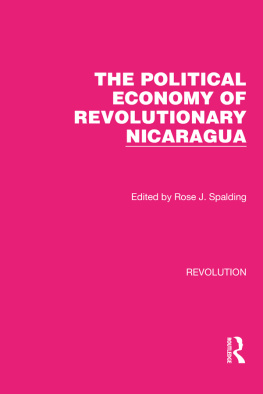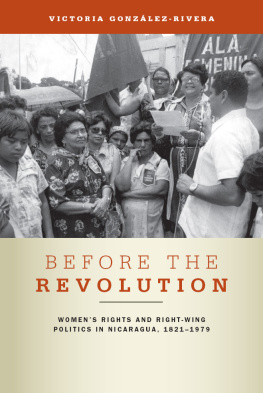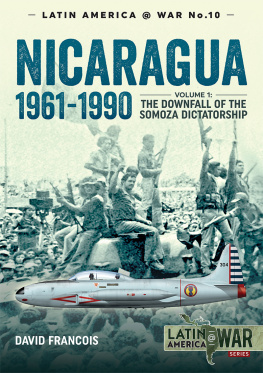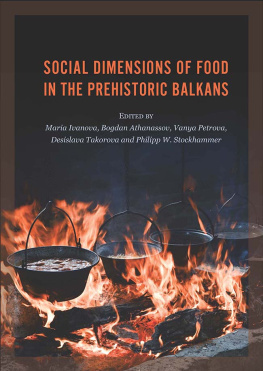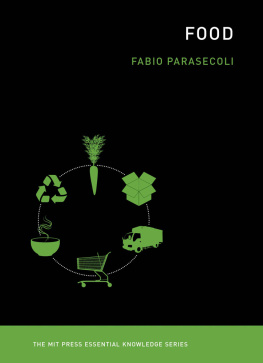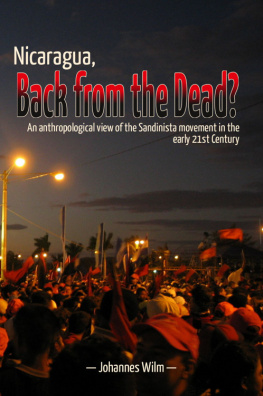Published by the University of Pittsburgh Press, Pittsburgh, Pa., 15260
Copyright 2021, University of Pittsburgh Press
All rights reserved
Manufactured in the United States of America
Printed on acid-free paper
10 9 8 7 6 5 4 3 2 1
Cataloging-in-Publication data is available from the Library of Congress
ISBN 13: 978-0-8229-4604-5
ISBN 10: 0-8229-4604-1
Cover art and design: Melissa Dias-Mandoly
ISBN-13: 978-0-8229-8740-6 (electronic)
ACKNOWLEDGMENTS
Numerous people in Nicaragua, Guatemala, Costa Rica, Switzerland, Germany, and the United States have contributed with their support to the research and writing of this book. My research was supported by generous funding from the Swiss National Science Foundation, which allowed me to do archival research at different places, present my findings at international conferences, and dedicate sufficient time to writing. I owe my interest and passion for Central American historyand more specifically for my research on food and consumption in Nicaraguato Volker Wnderich, who served as one of my PhD supervisors.
I would like to thank Corinne Pernet, who initiated a Swiss National Science Foundation research project on food policies in Latin America and invited me to participate. She supported the idea of my research on Nicaragua from the beginning. Our intense exchange on food and the activities of international organizations in Latin America strengthened my analysis for the book. Corinne contributed to the further development of the project and the chapters of this book with numerous helpful comments.
Numerous librarians and archivists contributed helpful advice. I would like to thank especially the staff of the Instituto de Historia de Nicaragua y Centroamrica (IHNCA) library in Nicaragua, the Institute of Nutrition of Central America and Panama (INCAP) library in Guatemala, the New York Public Library, the Ibero-American Institute Library in Berlin, the Food and Agriculture Organization (FAO) archives and library in Rome, the Bundesarchiv in Bern, and the Bundesarchiv and Politisches Archiv des Auswrtigen Amtes (BArch) in Berlin.
I started this research project at the University of St. Gallen and benefited from the support of the researchers and administrative staff there. In the next stage, the project moved to the Institute for European Global Studies at the University of Basel where the helpful staff and my quiet office with a view into the greenery facilitated my work significantly. I especially thank Isabella Lhr, Patricia Hertel, Cornelia Knab, and Tamar Lewinsky for the discussions and advice during our monthly meetings in Basel. I thank Christian Bschges and Christian Gerlach at the University of Bern, for their friendly welcome and their advice. Finally, during a difficult resettlement period at the University of Costa Rica I appreciated the support of Ctedras Internacionales staff, and I thank Baruc Chavarra Castro for revising the footnotes and the bibliography.
For support during my two research periods in Nicaragua, I would like to especially thank Miguel Ayerdis and Ligia Pea. Yuridia Odalis Mendoza deserves special thanks as she supported my research as an assistant with the transcription of Nicaraguan newspaper articles and helpful bibliographic information from Nicaraguan libraries. I wish to thank Monika Strasser in Len for her warm reception and hospitality as well as her help in establishing contacts to interviewees. I owe many thanks to all of my interviewees for their patience and willingness to share their stories, anecdotes, and recipes.
After the periods of archival research and traveling, I entered a period of intense writing during which the support of Hctor Jimnez Guzmn was crucial for finishing the manuscript. He contributed to the success of this endeavor with his patience, advice, critical reading, and delicious food. I am very grateful for the helpful comments of Annika Hartmann, Patricia Hertel, Mona Nikoli, Corinne Pernet, and Heike Wieters to the different chapters of the manuscripts first version. I wish to thank the two anonymous reviewers for their detailed comments and suggestions for restructuring, which provided useful directions for revisions. In addition, I would like to thank Margaret Puskar-Pasewicz for her careful editing of my English writing, her forbearance to my unpredictable schedule during my move overseas, and her numerous helpful questions, which improved the final version of the text. Finally, I thank the University of Pittsburgh Press for making this book possible, particularly Josh Shanholtzer for his patience and advice during revision.


